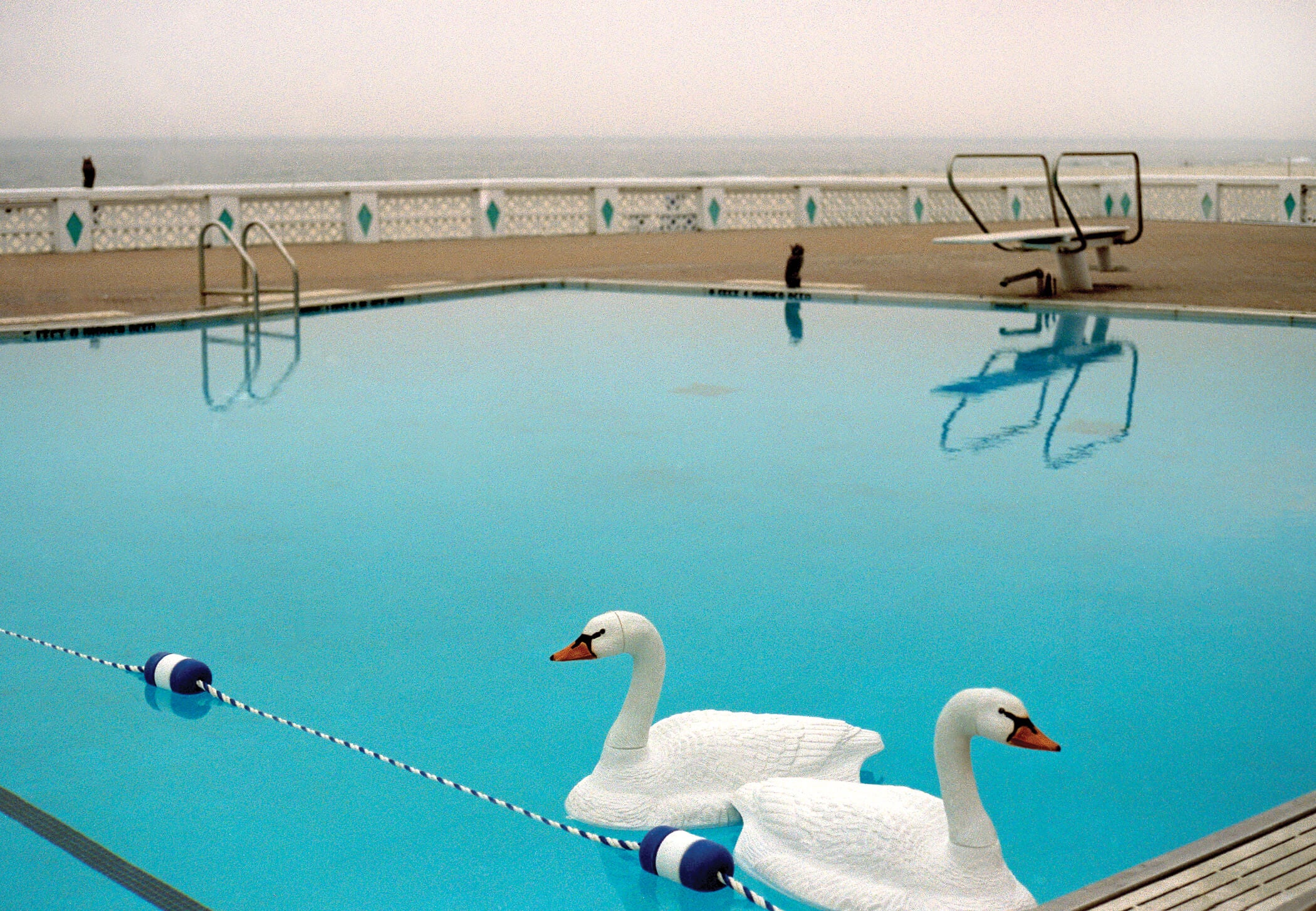THE CALIFORNIA CLOSETS MAGAZINE
 You could say that Baldomero Fernandez’s career was born in a love motel, one of the rent-by-the-hour establishments that punctuate Calle Ocho, the main street of Miami’s Little Havana.
You could say that Baldomero Fernandez’s career was born in a love motel, one of the rent-by-the-hour establishments that punctuate Calle Ocho, the main street of Miami’s Little Havana.
Sitting outside the funeral home during his grandmother’s wake, the now celebrated fashion and commercial photographer noticed garish pastel colors stretching across the muted dark asphalt, cast from nearby motel lights. Camera in hand, he returned the next day to shoot the love motels, eventually debuting the work at a local gallery—only to receive national praise. “Magazines started hiring me because of that,” he remembers. “It was the first time I got recognition for something I did on my own, something personal.”

A sweeping view of Fernandez’s favorite Cuban town, Baracoa, which has since been demolished in a hurricane. “This was an incredible vantage point between the moonlight and the red star, which is Mars,” he says. “It was the closest Mars had been to Earth in a few centuries.”
Today, the Miami-born Fernandez shoots to tell a story. No matter the object—a pair of jeans or a famous actor—he photographs with a narrative in mind, each shot part of a larger, intentional vision. He’s not one to direct, instead shooting his subjects as if he’s interrupted them in a perfectly ordinary moment. “What I love about his work is that it’s honest. There are no tricks,” says Jennifer Laski, photo and video editor of The Hollywood Reporter and Billboard, who has worked alongside Fernandez for years. “He’s a true portraitist, whether it’s a model or an actor or even a landscape or a house. He catches the authentic moment and doesn’t force anything.”
For this child of the exiled, little carried more magic than the chance of capturing an otherwise ephemeral moment. That’s how memories are formed, he thought, and history remembered.
Fernandez assumed he’d be a scientist: as a child, he found space travel fascinating. In the eighth grade, however, the school registrar placed him in the wrong elective class, photography, which he planned to drop by the end of the day. But then he held the camera, learned about the alchemy of the darkroom, and watched chemicals mix into imagery, the way they did in the 1980s. For this child of the exiled, little carried more magic than the chance of capturing an otherwise ephemeral moment. That’s how memories are formed, he thought, and history remembered—two essential components of Fernandez’s upbringing.
At a young age, Fernandez’s parents left Cuba and settled in Miami. His father worked as a bellman at an airport hotel and his mother as an administrator at the University of Miami. They lived a simple life, in many ways defined by a persistent longing for another place—one far away and seemingly imaginary, yet vivid through stories of days gone by. Growing up, Fernandez recalls “I remember my dad saying, ‘One day we’ll go back to Cuba. “I can show you all these things. Cuba is an amazing paradise,’’’ Fernandez said.

“Havana at night is really dark because there isn’t much street lighting,” says Fernandez. “Then there’s this beacon from a restaurant sign, creating a typical Cuban scene of a late ’50s car lit by neon.”
Though not the paradise his father recounted, Fernandez discovered meaning in the soil of Cuba. He’s since traveled back a handful of times, the island both stirring old memories and becoming the foundation for new stories. In 2013, Fernandez visited Cuba with his wife and young son to fulfill his father’s dying wish: return his ashes to Los Alfonsos, the dirt-poor village between two rivers where he’d grown up. Upon arriving, however, Fernandez found desolation. Flooded by local authorities to build a dam years before, the town his father knew so well lived in only one place: the mind’s eye.
But the discovery didn’t slow Fernandez. “We drove around for hours, in horrible roads, and we didn’t have a four-wheel drive [vehicle],” he recalls. Finally, he decided on a cemetery not far from his father’s original village. “It wasn’t exactly what he wanted, but close enough.”

Fernandez discovered this scene at a beach club in Rockaway, New York. “At the end of the day, they put in these plastic swans that hold chlorine tablets, creating a beautiful image of fake swans in a blue pool.”
For Fernandez, life behind the lens has offered him a view of the bigger picture: the ability to honor history, solidify memories, and capture his world in stories—one photo at a time.